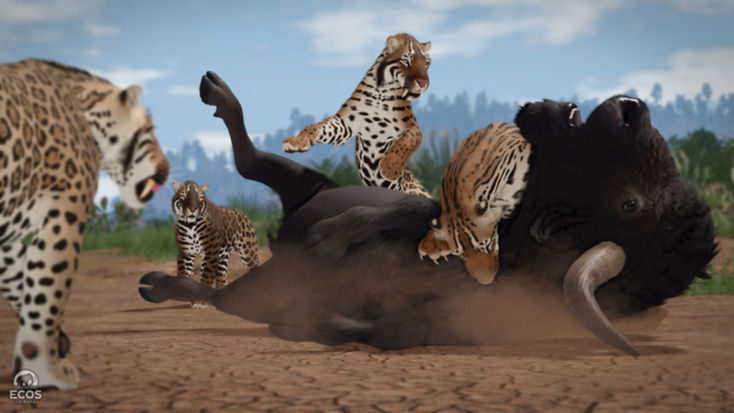
¿CUALES SON LOS
POZOS DE ALQUITRÁN DE LA BREA
Los pozos de alquitrán de La Brea en Los Ángeles, California, albergan uno de los ecosistemas mejor conservados de nuestro pasado reciente, que abarca la segunda mitad de la acertadamente llamada Era Rancholabreana , de 50.000 a 11.000 años antes del presente. El carácter reciente de La Brea es relevante para nosotros, ya que la superposición de especies extintas y vivas atrae las especialidades de nuestro equipo. La abundancia de mamíferos grandes e icónicos en La Brea hace que este sea un entorno perfecto para mostrar el espectro completo de la otrora abundante diversidad de megafauna de América del Norte.
The La Brea Tar Pits ecosystem boasts an impressive assortment of mammals of all sizes, rivaling the biodiversity of the modern African Serengeti ecosystem. This is in part due to the more temperate climate of the last ice age which allowed for animals from different biogeographic realms to coexist. Neotropical animals like sloths & tapirs could be found grazing alongside arctic animals such as horses & mammoths.

Illustration by @themongoosedude (Instagram.com/themongoosedude)
% Large Mammal Population in North America

100
0
H. sapiens enter continent
^
% survival of species
Log (time) kYA
Martin P. S. (1989). Prehistoric overkill: A global model. In Quaternary extinctions: A prehistoric revolution (ed. P.S. Martin and R.G. Klein). Tucson, AZ: Univ. Arizona Press. pp. 354–404.
Ecos: La Brea is set approximately 25,000 years ago, during the height of the Last Glacial Maximum (LGM). This was a time when North American ecosystems were highly productive, preceding the climate fluctuations and extinctions that would soon follow at the end of the Pleistocene Epoch.
Around this time, humanity was only beginning to pioneer the continent in an event known as the "Peopling of the Americas." There is no definitive date for this migration, as accumulating evidence has continually pushed back the timeline for the earliest presence of humans in North America. Currently, the earliest evidence is dated to ~20,000 years ago.
These early pioneers had yet to develop into the widespread megafauna-hunting cultures, such as Clovis, which emerged ~13,000 years ago. While not the sole factor in the extinction of large mammals, the spread of humans coincides with the disappearance of many megafaunal species across the continent.
Archaeological sites like the "White Sands footprints" in New Mexico provide evidence of humans coexisting with iconic Ice Age megafauna such as mammoths ~20,000 years ago. Other sites, such as Rimrock Draw, Oregon, provide evidence of humans butchering a Camelops they likely hunted.
Despite these adjacent human sites, no direct traces of humans have been found at the La Brea Tar Pits. Whether this indicates an absence of humans in the region or their careful avoidance of the asphalt seeps remains uncertain. It is worth noting that the skull of a woman buried at the site post-dates the megafaunal remains. Therefore, we cannot confidently say that humans coexisted with megafauna at La Brea.

Unused concept art exploring how early Paleoamericans may have looked in Ecos: La Brea, inspired by the Clovis & Indigenous cultures of Southern California. Artwork by @JayMD.
